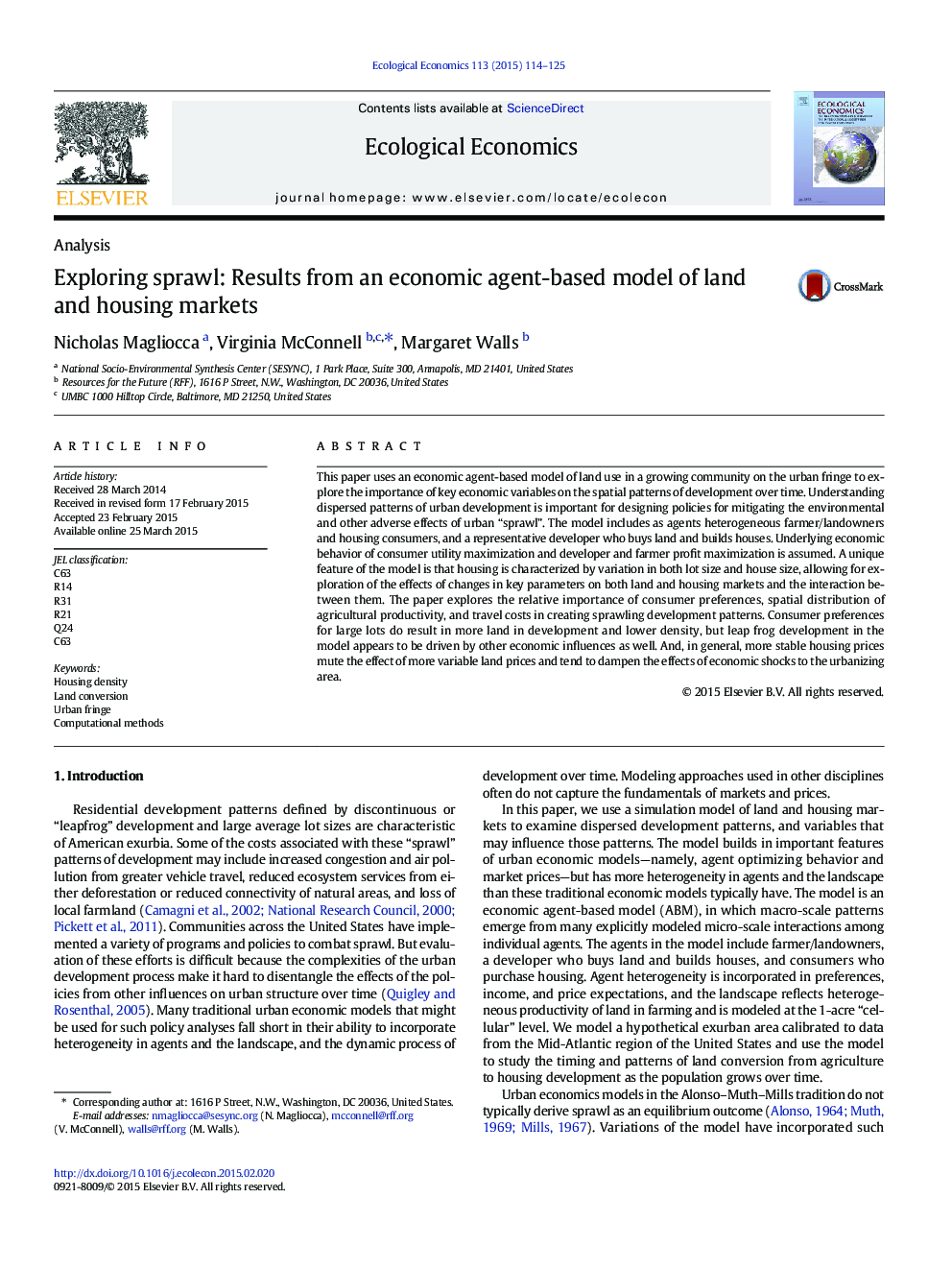| کد مقاله | کد نشریه | سال انتشار | مقاله انگلیسی | نسخه تمام متن |
|---|---|---|---|---|
| 5049394 | 1476366 | 2015 | 12 صفحه PDF | دانلود رایگان |
- Paper develops and simulates an economic agent-based model of land and housing markets in a growing ex-urban region.
- Low density and leapfrog development occurs due to landscape and agent heterogeneity and the dynamic process of development.
- Underlying agricultural productivity affects development patterns early, but eventually farmers' price expectations dominate.
- Land prices tend to vary more than housing prices, and therefore bear much of the effect of economic changes over time.
This paper uses an economic agent-based model of land use in a growing community on the urban fringe to explore the importance of key economic variables on the spatial patterns of development over time. Understanding dispersed patterns of urban development is important for designing policies for mitigating the environmental and other adverse effects of urban “sprawl”. The model includes as agents heterogeneous farmer/landowners and housing consumers, and a representative developer who buys land and builds houses. Underlying economic behavior of consumer utility maximization and developer and farmer profit maximization is assumed. A unique feature of the model is that housing is characterized by variation in both lot size and house size, allowing for exploration of the effects of changes in key parameters on both land and housing markets and the interaction between them. The paper explores the relative importance of consumer preferences, spatial distribution of agricultural productivity, and travel costs in creating sprawling development patterns. Consumer preferences for large lots do result in more land in development and lower density, but leap frog development in the model appears to be driven by other economic influences as well. And, in general, more stable housing prices mute the effect of more variable land prices and tend to dampen the effects of economic shocks to the urbanizing area.
Journal: Ecological Economics - Volume 113, May 2015, Pages 114-125
